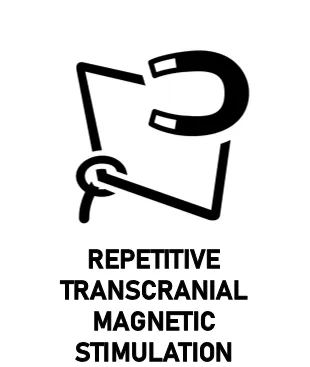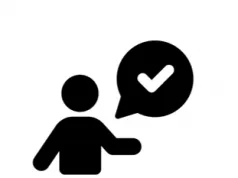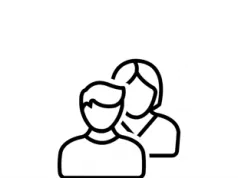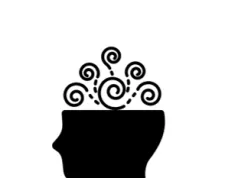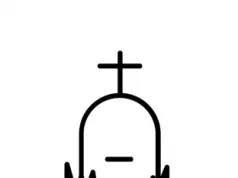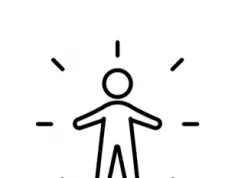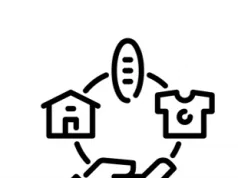Repetitive Transcranial Magnetic Stimulation (rTMS) is a type of talking therapy that can be used in the treatment of some mental health conditions. It is a rather modern treatment that has gained in popularity recently.
Like many other types of treatment, there are advantages and disadvantages to rTMS, as we cover in this article.

What is Repetitive Transcranial Magnetic Stimulation?
Repetitive Transcranial Magnetic Stimulation (rTMS): Repetitive transcranial magnetic stimulation (rTMS) is a type of therapy that can be used to treat an array of mental health conditions. The therapy involves a trained therapist using a magnet in order to apply multiple magnetic pulses to the areas of the brain which are believed to be responsible for the regulation of mood and emotions – called neurotransmitters. In theory, the higher the level of these neurotransmitters, the better mood and emotions become. It is very rarely used as a first line treatment, but if someone has little success in lessening their symptoms with a range of other treatments, then rTMS may be used.
Advantages of Repetitive Transcranial Magnetic Stimulation
- A good alternative to electroconvulsive therapy (ECT): When a person has been struggling with more conventional treats, they may want to try something a bit different. ECT, also known as electric shock treatment, may seem a little too extreme for some. Therefore, rTMS could be a good middle-ground.
- Short duration: rTMS is a treatment that is typically completed in a short length of time. Some forms of therapy take months to see a difference. But rTMS is a much easier and quicker form of therapy.
- Seems to be effective: rTMS appears to be effective for many conditions. There is a high success rate for rTMS, including for those that seem to have struggled with other treatment interventions. It appears to be especially useful for depression [1].
- Can treat many different conditions: rTMS can help to treat multiple mental health conditions. This is particularly useful for when it is used when other treatments haven’t worked. As many who struggle with treatments will have more than one mental health condition, it can be a useful intervention.
- Can provide long-term remission: rTMS has the potential to provide long-term remission from symptoms. For those that have struggled for a while from symptoms, this can be an incredible intervention.
- Minimal impact on life: rTMS does not have much of an impact on a person’s day-to-day life. A regular course of rTMS treatment involves a few 30 minute sessions taking place for around 6 weeks. This is something that won’t be time-consuming, which can be very beneficial.
Disadvantages of Repetitive Transcranial Magnetic Stimulation
- Doesn’t necessarily treat the underlying causes: One of the biggest problems is that rTMS doesn’t actually treat the underlying causes of mental health problems, such as past trauma. While symptoms may disappear, difficult events may need more conventional talking therapies to help.
- Side effects are possible: Due to the nature of rTMS, it is not without its risks. Side effects, while typically not strong, are still possible. At worst, seizures or long-term damage are possible.
- Not as effective as ECT: We mentioned earlier that some patients choose to undergo rTMS instead of ECT. However, ECT does have a higher success rate than rTMS [2].
- rTMS is expensive: rTMS is an expensive type of therapy. As a result, it is very rarely available on the NHS, meaning it is sometimes necessary to receive the therapy privately.
- Requires some commitment: While rTMS doesn’t require intense commitment, in order to get the most out of it, a patient does need to ensure that they attend all of the arranged sessions. As rTMS involves multiple sessions a week, it can be somewhat inconvenient for some.
- The actual procedure isn’t too pleasant: rTMS is not something that people would typically enjoy going through. rTMS isn’t painful, but it can cause some discomfort.
See Also
- Therapy Home
- Everything You Need To Know About Talking Therapy
- FAQ’s About Talking Therapy
- Repetitive Transcranial Magnetic Stimulation: Everything You Need to Know
- The Advantages and Disadvantages of Repetitive Transcranial Magnetic Stimulation
- 8 Things You Should Know About Repetitive Transcranial Magnetic Stimulation
- What Are The Side Effects of Repetitive Transcranial Magnetic Stimulation (rTMS)?
- How Effective is Repetitive Transcranial Magnetic Stimulation (rTMS)?
- Is Repetitive Transcranial Magnetic Stimulation (rTMS) Safe?
- How Do Repetitive Transcranial Magnetic Stimulation (rTMS) and Electroconvulsive Therapy (ECT) Compare?
Disclaimer
This website should be used purely for informational purposes, and does not intend to, nor should it ever, be used as a replacement for professional medical advice.
We strive to keep all of our pages updated, and ensure that our website is full of factual and in-depth information. However, we encourage you to browse this website with care.
As a reminder, this website and all content within it cannot and should not replace the advice of a trained medical professional. You can read our full disclaimer at this link.
Helplines
If you are struggling with your mental health, help is available. With the right support and treatment, you can make a recovery. For information on helplines, or if you are in a state of crisis, please visit our crisis page by clicking on the relevant link for your geographical location (United Kingdom), (United States), (International). You can also see how to get mental health treatment and the process involved by clicking this link.
References
[1] Bertschy, G. & Rachid, F. (2006). Safety and efficacy of repetitive transcranial magnetic stimulation in the treatment of depression: a critical appraisal of the last 10 years. Clinical Neurophysiology. 36 (3), p157-183.
[2] Ren, J., Li, H. & Palaniyappan, L. (2014). Repetitive transcranial magnetic stimulation versus electroconvulsive therapy for major depression: a systematic review and meta-analysis. Progress in Neuro-Psychopharmacology & Biological Psychiatry. 51 (1), p181-189.

